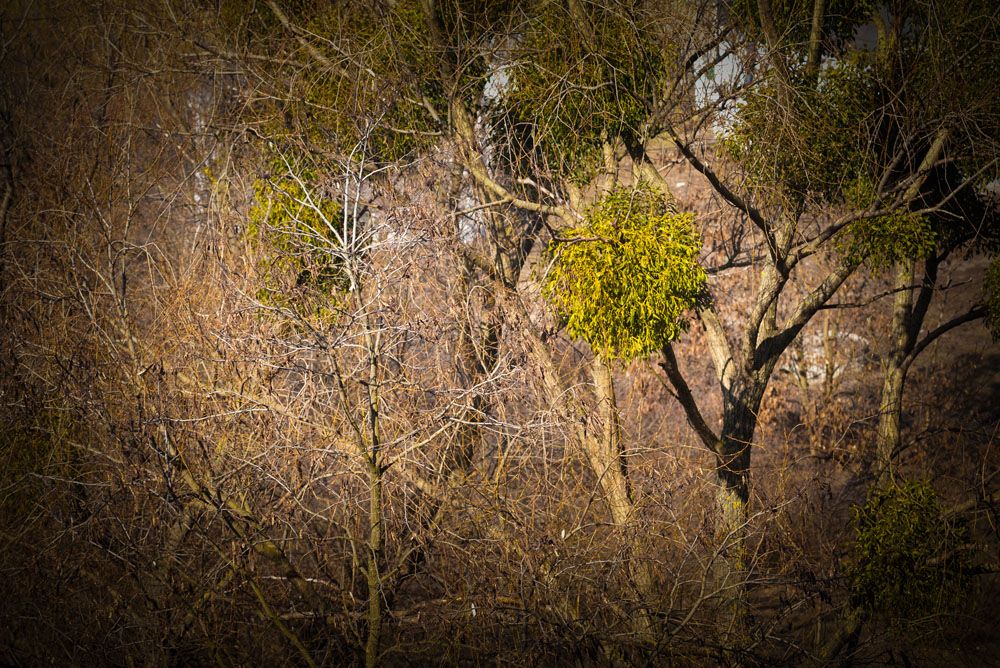
Dwarf Mistletoe
Dwarf mistletoe
Dwarf mistletoes are responsible for the most deadly and economically significant conifer diseases in many forests of western North America, but they also exist in Europe, Asia, and northern Africa. They are linked to the more known but less harmful leafy, or true, mistletoes of the genera Phoradendron and Viscum, which predominantly parasitize fruiting trees and a few gymnosperms. Dwarf mistletoes are essential components of these forested ecosystems, and they can have both positive and negative effects on forest health, function, and productivity. Dwarf mistletoes have negative consequences such as decreasing tree growth, diminishing wood quality, and causing death.
Symptoms:
The first sign of infection is swelling of a branch or trunk near the infection site. The swelling is generally fusiform (tapered at the ends) and ranges in size. Cankers caused by dwarf mistletoes in older stem infections may act as infection courts for stem-decay fungus. The most visible indication of dwarf mistletoe infection is the formation of a witches’ broom when a branch has been infected for many years or longer. This is a thick mass of profuse, sometimes twisted branches that develop in response to dwarf mistletoe infestation. A few kinds of dwarf mistletoe do not cause the development of witches’ brooms.
Life cycle:
The plant reproduces largely by seed. The berry-like fruits mature in late summer or fall and explode, spraying sticky seeds up to 50 feet. The seeds stick to the needles, twigs, branches, and trunks of the trees and germinate next spring. When the root-like structure of a germinated seed effectively penetrates the bark, the host is infected. The root-like system embeds itself in the wood and supplies the plant with water and nourishment from the host tree. The mistletoe plant grows and spreads within the host. Mistletoe shoots appear after two to four years, and fruits appear after another one to two years.
Damages:
Dwarf mistletoes may parasitize and harm trees of all ages. Dwarf mistletoes damage trees by depriving them of food and water and interfering with transporting these vital components within the tree. Infected trees develop at a slower rate and produce fewer seeds. The parasites can potentially directly destroy the trees. The time it takes for mistletoe to destroy a tree depends on the tree’s age, its vigorousness, and how highly infected it is with mistletoe. Seedlings and saplings are generally destroyed quickly after getting infected, but bigger trees may sometimes survive mistletoe infestations for many years.
Treatment:
Dwarf mistletoe can be efficiently controlled by timing the application of any silvicultural treatments that prioritize the removal or death of diseased branches or trees. Herbicides that destroy the parasite, including the endophytic system, frequently harm the host. Ethephon formulations (which contain the active component 2-chloroethyl phosphoric acid, which produces ethylene) have been used successfully to promote shoot abscission.
- Pruning can also decrease the risk of personal harm or property damage from a huge broom falling. Another goal of trimming is cleanliness (i.e., sanitation pruning).
- Regeneration operations provide the best option for controlling dwarf mistletoes by removing infected stands and replacing them with mistletoe-free regeneration.
- “Sanitation cutting” (or just sanitation) has been separated from “sanitation thinning.” The attempted removal of all diseased trees is known as sanitation cutting. The emphasis on sanitation thinning is on spacing, with only the most severely sick trees removed. Many entries (5 to 10 years apart) are generally required to sterilize a stand or reduce disease severity.
- For commercial thinning, select left trees with a dwarf mistletoe rating (DMR) of 3 or less, especially those with infections in the lower crown.
- The chemical Floral ® is registered for the control of dwarf mistletoe. It does not kill the parasite, but it does inhibit seed production for a brief time (one to three years).
- Western dwarf mistletoe (A. campylopodum) has been decreased in ponderosa pine forests by managed underburning. Trees that had been heavily infected were just half as likely as healthy trees to withstand a fire.
